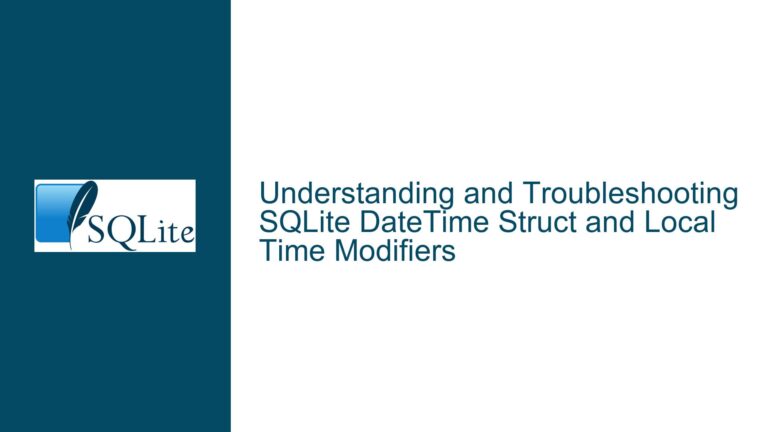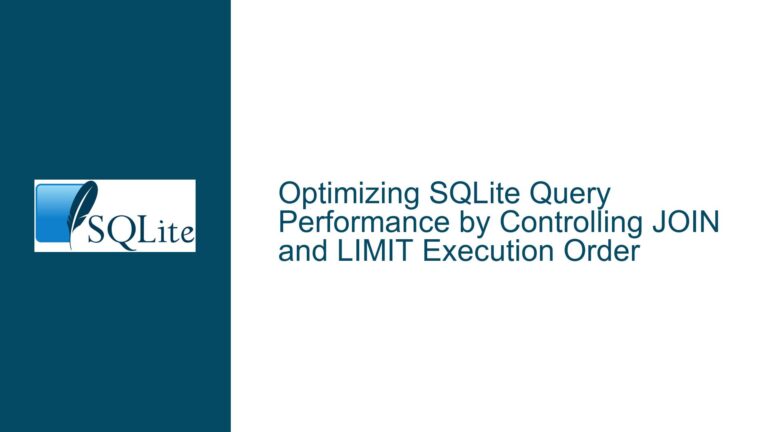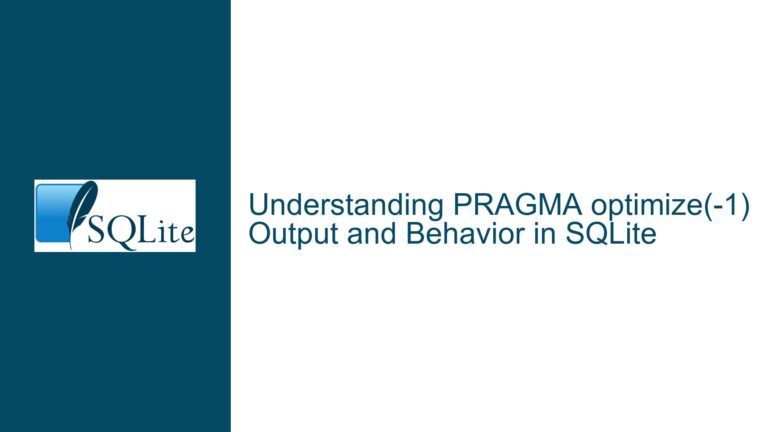Transposing Row Tuples to Column Tuples in SQLite: A Comprehensive Guide
Understanding the Need for Transposing Row Tuples to Column Tuples The core issue revolves around transforming a row-based tuple into a column-based tuple in SQLite. This transformation is often required when dealing with configuration data or when the structure of the data needs to be altered for specific use cases, such as reporting, data analysis,…









